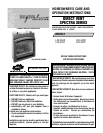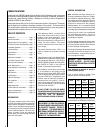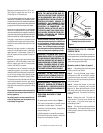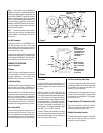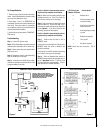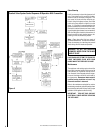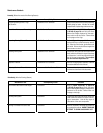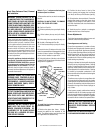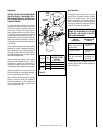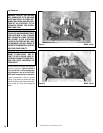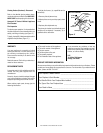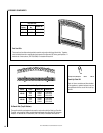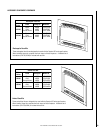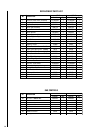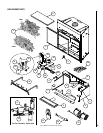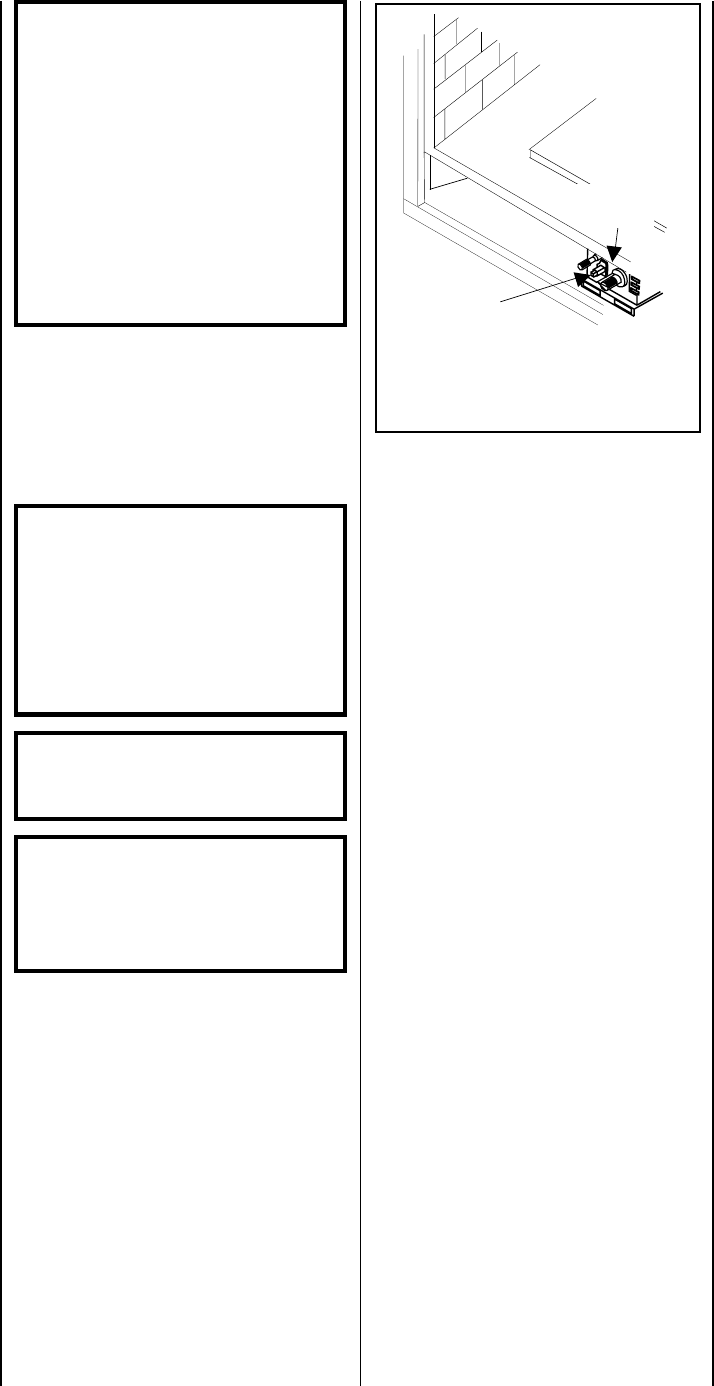
3
NOTE: DIAGRAMS & ILLUSTRATIONS NOT TO SCALE.
Carbon Monoxide Poisoning: Early signs of
carbon monoxide poisoning are similar to the
flu with headaches, dizziness and/or nausea.
If you have these signs, obtain fresh air imme-
diately. Turn off the gas supply to the appli-
ance and have it serviced by a qualified profes-
sional, as it may not be operating correctly.
Maximum manifold pressure is 3.5 in. w.c.
(0.87 kPa) for natural gas and 10 in. w.c.
(2.49 kPa) for LP/Propane gas.
Do not use these appliances if any part has been
under water. Immediately call a qualified, profes-
sional service technician to inspect the appliance
and to replace any parts of the control system and
any gas control which have been under water.
Ne pas se servir de cet appareil s'il a été plongé
dans l'eau, complètement ou en partie. Appeler
un technicien qualifié pour inspecter l'appareil et
remplacer toute partie du système de contrôle et
toute commande qui ont été plongés dans l'leau.
Test gage connections are provided on the
front of the millivolt gas control valve (identi-
fied OUT for the manifold side and IN for inlet
pressure.
Minimum inlet gas pressure to these appli-
ances is 5.0 inches water column (1.24 kPa) for
natural gas and 11 inches water column (2.74
kPa) for propane for the purpose of input ad-
justment.
Maximum inlet gas supply pressure to these
appliances is 10.5 inches water column (2.61
kPa) for natural gas and 13.0 inches water
column (3.23 kPa) for propane.
The appliance must be isolated from the gas
supply piping system (by closing its individual
manual shut-off valve) during any pressure test-
ing of the gas supply piping system at test
pressures equal to or less than ¹⁄₂ psig (3.5 kPa).
The appliance and its individual shut-off valve
must be disconnected from the gas supply
piping system during any pressure testing of
that system at pressures in excess of ¹⁄₂ psig
(3.5 kPa).
These appliances must not be connected to a
chimney or flue serving a separate solid fuel
burning appliance.
Any safety guard or screen removed for ser-
vicing the appliance must be replaced prior
to operating the appliance.
OPERATION AND CARE OF YOUR
APPLIANCE
For piezo ignitor location, refer to
Figure 1.
The control compartment is located behind
the bottom front face piece. For access:
In the Cast Iron Face accessory - simply lift up
and pull directly out.
In the Rectangular or Arched Face accessory -
Pivot the main face door (bottom) on the two
hinge pins, and drop down to open.
WARNING: DO NOT PLACE CLOTH-
ING OR OTHER FLAMMABLE MATERI-
ALS ON OR NEAR THIS APPLIANCE.
AVERTISSEMENT: SURVEILLER LES
ENFANTS. GARDER LES VÊTEMENTS,
LES MEUBLES, L'ESSENCE OU AUTRES
LIQUIDES À VAPEUR INFLAMMABLES
LOIN DE L'APPAREIL.
WARNING: CHILDREN AND ADULTS
SHOULD BE ALERTED TO THE HAZARDS
OF HIGH SURFACE TEMPERATURES. USE
CAUTION AROUND THE APPLIANCE TO
AVOID BURNS OR CLOTHING IGNITION.
YOUNG CHILDREN SHOULD BE CARE-
FULLY SUPERVISED WHEN THEY ARE IN
THE SAME ROOM AS THE APPLIANCE.
WARNING: FAILURE TO COMPLY
WITH THE INSTALLATION AND OP-
ERATING INSTRUCTIONS PROVIDED
IN THIS DOCUMENT WILL RESULT IN
AN IMPROPERLY INSTALLED AND OP-
ERATING APPLIANCE, VOIDING ITS
WARRANTY. ANY CHANGE TO THIS
APPLIANCE AND/OR ITS OPERATING
CONTROLS IS DANGEROUS. IM-
PROPER INSTALLATION OR USE OF
THIS APPLIANCE CAN CAUSE SERI-
OUS INJURY OR DEATH FROM FIRE,
BURNS, EXPLOSION OR CARBON
MONOXIDE POISONING.
Figure 1
Honeywell RF Control Millivolt Gas Valve
Showing Piezo Ignitor Location
Piezo
Ignitor
Honeywell
Gas Valve
INSTRUCTIONS FOR RF COMFORT
CONTROL VALVE
The Comfort Control Valve allows remote con-
trol of temperature, fan and flame appearance.
Note: The antenna should hang in free air and
away from any grounded metal.
Operation (
refer to Figure 2, page 4
)
Step 1. If the manual switch is in the remote
position, switch it to LOCAL.
Step 2. Turn the Pilotstat knob counter-
clockwise from OFF to the PILOT position,
push the knob down and hold it in position.
The pilot valve will open and allow gas to flow
to the pilot burner.
Step 3. Actuate the plunger on the piezo
(several times if necessary) until the pilot
burner is lit. When the pilot burner is lit, the
LED on the control will come on after approxi-
mately 40 seconds. The receiver/valve is fully
powered.
Step 4. Release the knob. The shaft will
move forward. The pilot burner should now
stay burning. If the pilot burner goes out,
repeat Steps 2 and 3.
Step 5. Turn the knob counterclockwise to
the ON position. If the manual switch is in the
LOCAL position, the main burner will turn on
immediately.



